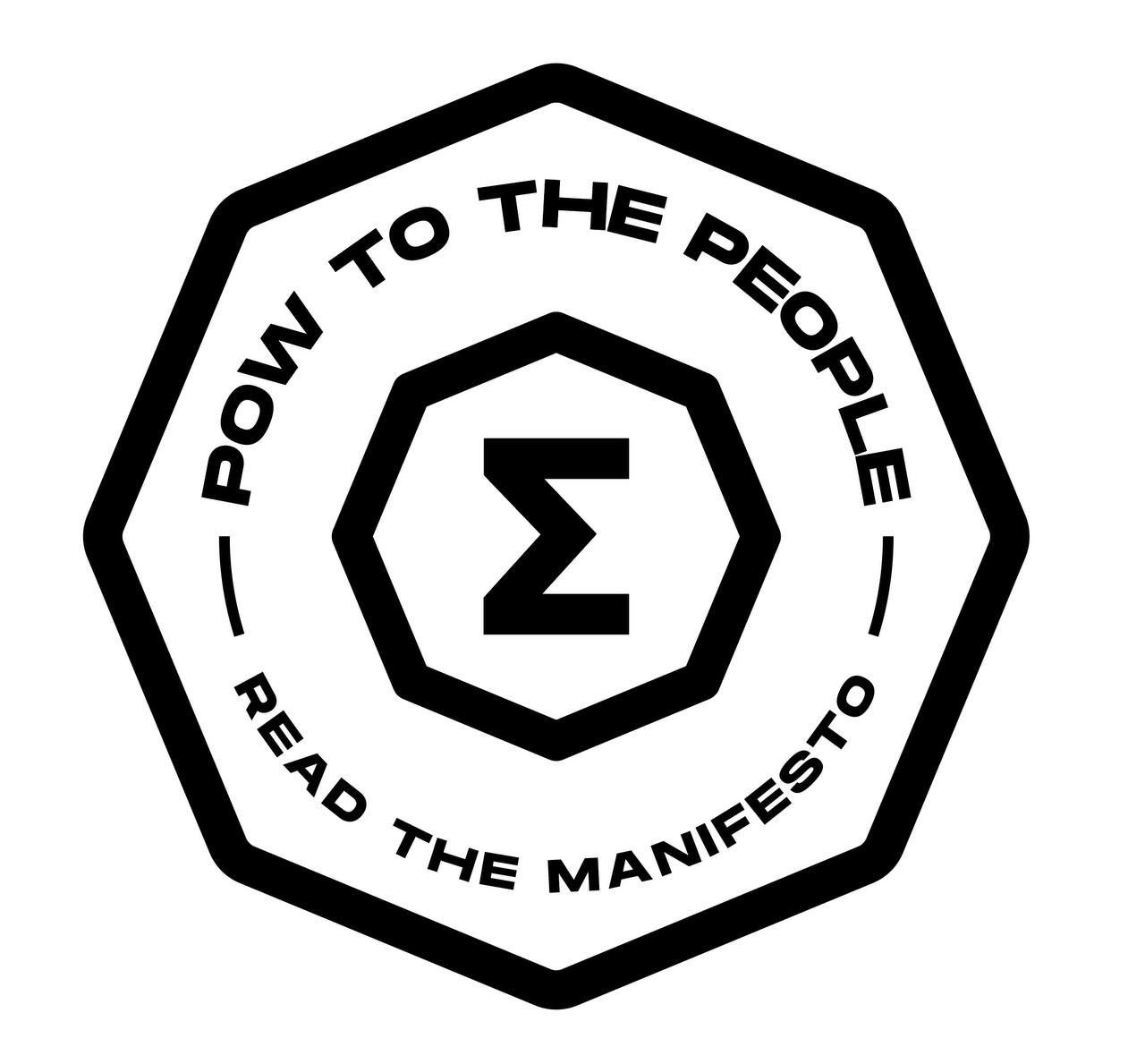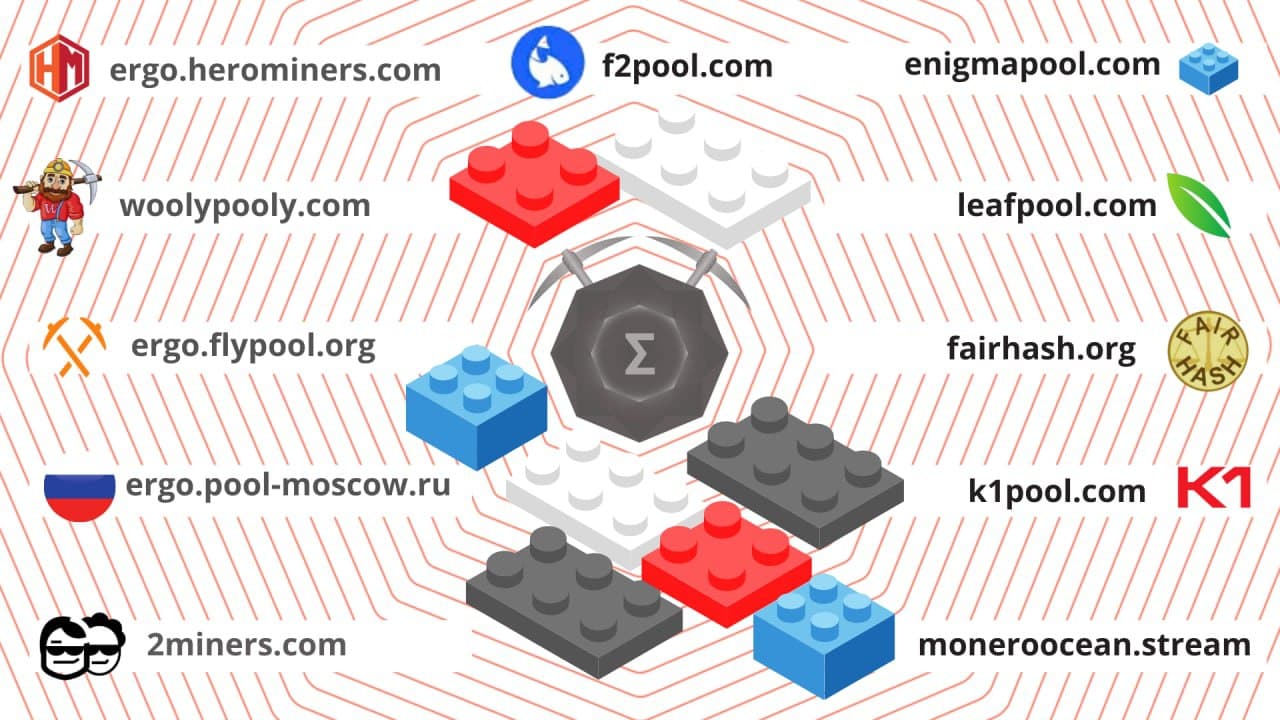¶ The Complete Ergo Mining Handbook v2.0

There are active miner communities for Ergo on Discord and Telegram. For direct support there’s #mining-support on Discord - Enable the mining role in #get-roles.
¶ The Coin: What is Ergo?
Ergo has a strictly limited supply, Ergo’s original 8 year emission schedule was extended by miners with EIP-27 (live since block #777,217) while maintaining original max supply.
All $ERG tokens are mined through an original Proof‐of‐Work (“PoW”) algorithm called Autolykos v2, which is ASIC resistant and GPU-friendly by design.
Compared to the majority of other PoW options, Autolykos v2 is a highly optimized, and power-efficient algorithm. It’s often called the cool algo, because it has a tendency to run 15-20 ℃ cooler than KAWPOW or Dagger Hashimoto variants- when tuned properly.
Ergo employs a smoothed difficulty algorithm, which was recently upgraded in response to the greatly increased number of on-off miners on Ergo since the Ethereum Merge, in Sept. 2022. More on difficulty towards end of guide.
Miners have to perform memory-hard computations, making Ergo friendly for GPU mining. At least ⁓3GB memory is needed to mine Ergo currently, but the most efficient implementation utilizes around 4 GB of vRAM.
- A part of ASIC resistance on Autolykos v2 is credited to Ergo’s periodic memory table adjustments. These adjuments slowly increase the minimum GPU vRAM required to mine Ergo over time. The goal being, if someone built an integrated circuit (ASIC) for the memory table today, they would likely have issues with their ASIC machine when the memory table is adjusted later (increased), as per schedule.
There was 0 ERG in existence at launch of mainnet as there was no ICO nor pre‐mine. At the end of 8 years, the final Erg supply will be 97,739,925 Ergs. The Ergo target block interval is 2 minutes and for the first 2 years, each block will release a total of 75 Ergs to be shared between the miners and the Treasury (Treasury discussed below). But starting at year 2, the rate of emission will fall by 3.0 Ergs and thereafter further decline every 3 months by an additional 3.0 Ergs, which will result in an end to emission 8 years after launch.
Original 8 year emission schedule was extended after supermajority (>90%) of miners voted in favor of soft fork. Total supply of 97,739,925 Ergs is strictly preserved.
Check out 1.Ergos Reemission Vote EIP27: A Path to Sustained Growth? 2.Ergo Emission: details, retargeting via a soft-fork and 3. EIP-27 githubfor details.
EIP-27 showcases the network’s ability to amend itself/evolve, in a decentralized fashion. Similar to EIP-27, most future protocol changes are expected to occur painlessly, via soft and velvet forks.
-
Check out the updated emissions curve, including EIP-27 re-emission contract with ergo.watch/emission.
-
The explorer can give you various information & stats on mining and the network.
-
The difficulty over time is visible here.
For more information about Ergo follow the links below:
¶ Ergo Wallets
Bookmark this official Ergo #Wallets page:
-
Yoroi is no longer a recommended Ergo wallet. If you check the official Ergo wallet link URL above, you will see some great “team” and “other” wallets, but no mention of Yoroi.
-
Restore Yoroi balance using better alternatives using “Import” or “Restore” Wallet options, you will need correct mnemonic seed phrase of course.
A wallet will be required for you to collect your mining rewards. Digital wallets can help keep your digital currency safe, private and in your control. We highly recommend the use of personal wallets, not custodial exchange wallets, for storing Ergo assets (technically, they store the keys to your Ergo addresses). But keep in mind, your wallet is unlike your bank account, so take extra precautions with your passwords and be sure to perform regular backups to protect your money. If you are unwilling or unable to secure a mnemonic seed phrase (long string of random unrelated words) long-term, an exchange or custodial wallet of some sort may be a better option for you.
¶ Wallet Types:
¶ Helpful Resources
-
Ergo Tutorials has dozens of great, easy-to-follow tutorials, several of which cover installation and use of the popular ERG wallets.
-
Tooling and Setup Guides for popular wallets on the ErgoPlatform Blog.
-
Best Ergo Wallets for Desktop ErgoForum post by @TypoDaPsycho1.
NOTE: Most wallets are supported by third parties, we only provide the information as a courtesy, in order to simplify the overall digital currency experience for you.
¶ The Hardware:
You will need computer hardware to mine Ergo also refered to as a mining rig. Ergo mining is ASIC resistant and requires a GPU (Graphics Card) for mining. A mining rig can be as simple as a single GPU gaming computer, up to a multi GPU mining rig.
While it is possible to mine Ergo with a 4gb GPU. A 6GB GPU is the suggested minimum as Ergo heavily relies on memory usage while the core processor sits idle.
Note: this last statement is seemingly pre Ergo’s “hardening upgrade” hard-fork. As mentioned earlier in Handbook, 3gb is enough VRAM to mine Erg but that will soon change with Ergo’s scheduled “DAG” increase (DAG is a misnomer according to kushti here it’s actually a table).
¶ Components required to build a mining rig:
-
Power Supply (PSU)
-
Processor (CPU)
-
Memory (RAM)
-
Storage (USB, SSD, HDD)
-
Other Hardware
- GPU Risers
- CPU Cooler
- Mining Rack
- Fans
Search your card here Autolykos v2 hashrates to find the hashrate.
¶ The Pools:

- Artwork by: Autolykos Megistos
¶ Kryptex Pool
¶ GetBlok.io Smart Pool
¶ LeafPool
¶ Enigma Pool
¶ Miningcore
¶ WoolyPooly
- How to start mining Ergo (ERG) on Windows with AMD RX 4GB cards
- WoolyPooly Discord
- WoolyPooly Telegram Chat
¶ K1pool
¶ 2Miners
¶ F2pool
¶ FlyPool
¶ HeroMiners
- Hero Miners: How to Mine Ergo (ERG)? Complete Beginner’s Guide
- HeroMiners: How to mine Erg
- How to Mine Ergo? Step by Step (Youtube)
¶ OKMINER
- [Okminer Telegram Chat] (https://t.me/okminer_support)
- [Okminer Mobile App iOS] (https://apps.apple.com/ru/app/okminer-os/id1494087547)
- [Okminer Mobile App Android] (https://downap.okminer.com/hashapk/okminer.apk)
- [Okminer Discord] (https://discord.gg/atTjmbT62J)
- [How to start mine] (https://okminer.zendesk.com/hc/en-gb/categories/15474122316180-Mining-Tutorial)
Check pool stats to see ranking of pools. See note regarding 51% attack below
Please do not mine to mining pools with large hashrate. Any pool close to 51% of the total network is at risk of an attack.
¶ The Miners: (Mining Software)
There are multiple miners that can be used to mine Ergo (Autolykos2). Below you will find a list of mining software that can be used to mine ERG. There are various opinions as to which mining software is best and some are clear winners. Best advice is to try them all if you can and see what works best for your rig set up specifically. What works for one may or may not work for another.
In addition to dedicated mining software, there are also Mining OS or operating systems such as HiveOS, which is one of the more popular options. This allows you to control your rig through dedicated software that will assist with connecting to pools, OC settings, and miners or mining software. These would be considered an all in one package where as using a specific miner may require other resources or plug ins.
¶ Mining Software:
¶ Lolminer
¶ Nanominer
¶ NB Miner
¶ SRB Miner
¶ Team Red Miner
¶ Trex Miner
¶ Mining OS:
¶ Hive OS
¶ Minerstat
¶ Nice Hash
¶ Rave OS
¶ Simple Mining OS
¶ Source Code Miners
For the AMD miner, the compatible Operating Systems are:
- RedHat Enterprise Linux 7.2 (64-bit version)
- RedHat Enterprise Linux 6.8 (64-bit version)
- Ubuntu 16.04 (64-bit version)
Ergo can also be mined with Nvidia miner
Miners can fix value by minting SigUSD
¶ Solo Mining
You can solo mine on any of the pools that offer a solo port. Otherwise you will need to build a node and stratum server (pool) can also try ergoNomp
Please check this form to see if solo mining is worthwhile.
In order to operate them, you may or may not need to use Stratum Server and Stratum Proxy. These two projects are here:
¶ Difficulty
EIP-0037 is an improved version of Ergo’s original difficulty adjustment algorithm (DAA), known as the linear least squares method. Improvements resulting in a more responsive/smoother DAA are made by shortening epoch length, amplifying weight of the last epoch, and limiting change in difficulty as follows:
Epoch = 128 blocks
🔹 1. Calculate predictive difficulty using previous 8 epochs (128 blocks each). Limit result to 50% change, compared to last Epoch.
🔹 2. Calculate classic difficulty (as done in Bitcoin).
🔹 3. Take average of predictive & classic difficulty.
🔹 4. Finally, Limit adjustment so that difficulty is never changed by more than 50% per epoch.
Basics (with ideal block times of 120 seconds):
Epoch (how often difficulty is adjusted)= 128 Blocks x 2 min block time = 256min, so difficulty is adjusted every ~4.26 hrs
Adjustment Targeting Window = 8 epochs x 128 blocks x 2 min block time = 2048min, so difficulty algorithm uses ~34.1 hrs of recent blockchain history to determine next difficulty value
-
Ergo’s difficulty over time is visible here.
-
For an estimate of the upcoming difficulty, check out the Difficulty and Epoch Monitor- by community members @Essaias_Crypto and @Luivatra.
¶ Host A Pool
Currently the #host-a-pool on Discord is the best place to get support configuring a pool.
- ErgoStratumProxy | Miner Connection + Work Management
- ErgoStratumServer | Pool Server
- ergo-nomp | Node open mining portal configufed for ergo
Step by Step
- Setup a Node
- Setup ErgoStratumServer
- Point ergo-nomp to (1) and (2)
¶ Resources
Calculators
Other Miners
- CUDA-based GPU miner for Ergo for NVidia cards
- OpenCL miner for ERGO for AMD cards
- #smartpools
